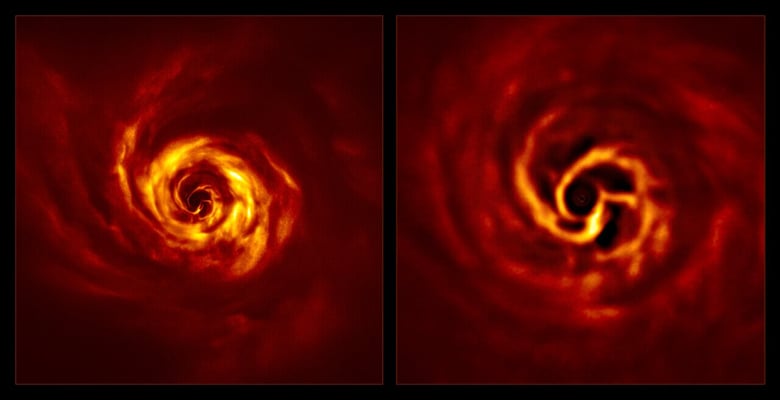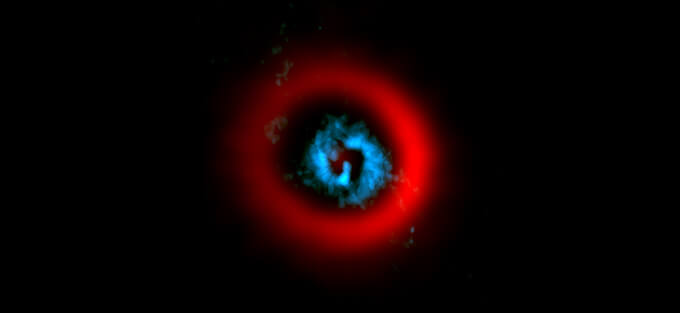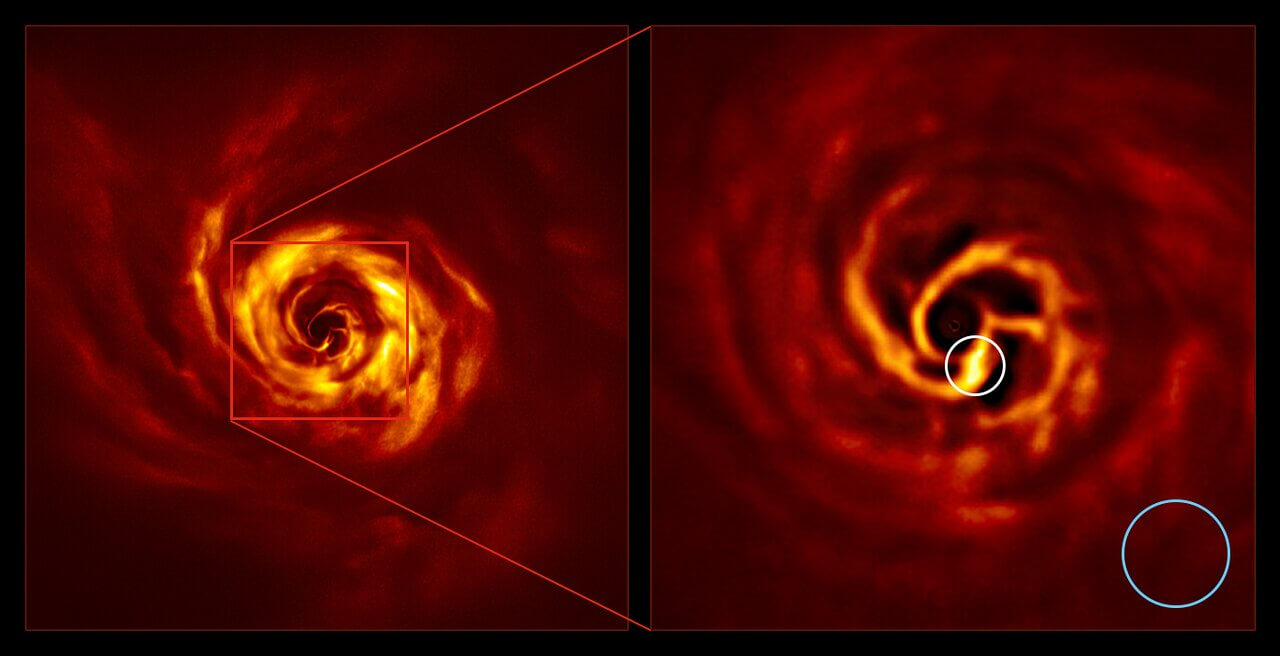Astronomer Witnessed a Star System Being Born

SPHERE images of the AB Aurigae system (side by side). Image © ESO/Boccaletti et al.
The understanding of the formation of the solar system helped us to understand the formation of the planets and exoplanets and this begin from the accumulation of dust particles. These materials arranged in the outer space in the shape of a disc called the protoplanetary disk and this protoplanetary disk follows the law of conservation of angular momentum. Gradually materials fo the protoplanetary disk starts to glue together and finally form planets. This expected way of formation of planets and planet systems like our solar system has never been tested through observations and been a scientific mystery together with a major curiosity among the astronomers.
The formation of planets/planet system is believed to start in protoplanetary disks and it takes a few million years.
But using European Southern Observatory’s Very Large Telescope (ESO's VLT), it seems that astronomer have finally evidenced a planetary system being born.
Anthony Boccaletti who led the study from the Observatoire de Paris, PSL University, France said, "Thousands of exoplanets have been identified so far, but little is known about how they form."
In this study, Boccaletti and colleagues used the Spectro-Polarimetric High-contrast Exoplanet REsearch (SPHERE) instrument on ESO's VLT in Chile.
SPHERE was designed mainly with the aim to detect and study new giant exoplanets orbiting nearby stars and this uses a method called direct imaging in which SPHERE tries to capture images of the exoplanets directly, as though it were taking their photograph. This can also take the images of the disc of dust around the star which is extremely a difficult task to take.
In 2017, a telescope operated by ESO called Atacama Large Millimeter/submillimeter Array (ALMA), has observed two of the spiral arms - with one arm falling into the star, and the other expanding outwards - within a large gap of the inner disk surrounding newly formed star AB Aurigae. This observation was the first clue of the ongoing planet formation around the star.

Back in 2019, Boccaletti and a team of astronomers from France, Taiwan, the US, and Belgium start to capture a clearer image of the same AB Aurigae by using the SPHERE instrument and the obtained images are the deepest images of the AB Aurigae system obtained to date.
Boccaletti said, "We need to observe very young systems to really capture the moment when planets form."
Until now astronomers had never been able to take a sharp and deep image of the young disc that will be enough to see the 'twist' that marks the spot where a baby planet may be coming to existence.
This new image of AB Aurigae system, located 520 light-years away from Earth, features a stunning spiral of dust and gas around it. AB Aurigae system lies in the constellation of Auriga (The Charioteer).
The seen spiral of this type signifies the presence of baby planets. The baby planets create a disturbance in the disc in the form of a wave. Emmanuel Di Folco of the Astrophysics Laboratory of Bordeaux (LAB), France, who also participated in the study compares the disturbance as "somewhat like the wake of a boat on a lake," and as the baby planets rotate around the central star, this wave gets shaped into a spiral arm.

The very bright yellow 'twist' region close to the centre (shown in the above image) of the new AB Aurigae image is one of these disturbance sites where the team believes a planet is being made.
Since 2005, ESO has been working with its community and industry to develop a 39-metre Extremely Large optical/infrared Telescope. Using this, astronomers will be able to gain advanced astrophysical knowledge and the detailed studies of subjects like planets around other stars, supermassive black holes. Also, this telescope is believed to reveal information about some mysterious subjects like the first objects in the Universe, and the nature and distribution of the dark matter and dark energy that dominate the Universe. Boccaletti explained, "We should be able to see directly and more precisely how the dynamics of the gas contributes to the formation of planets.
A research paper describing the work was published online in the journal Astronomy & Astrophysics on 20 May 2020.
